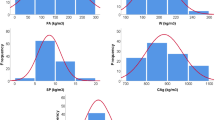Abstract
This paper elucidates a data predicting model using an intelligent rule-based enhanced multiclass support vector machine and fuzzy rules (IREMSVM-FR) while optimizing the test practices and trials needed for the proportioning of self-compacting concrete (SCC) using response surface methodology (RSM). The SCC requires a wide range of material content, and hence, more numbers of investigations were typically essential to select a suitable mixture to get the required properties of SCC. Taguchi’s methodology with an L18 array and three-level factor was used to reduce the number of the experiment. Four regulating elements, i.e., cement, fly ash, water powder ratio and superplasticizer, were used. Two results such as slump flow in the fresh state and the compressive strength in the hardened state at 28 days were assessed. Optimizations of the results were set by using RSM. The reactions of material parameters examined to optimize the fresh and hardened properties such as slump flow and compressive strength of SCC. The full quadratic equation of a model can be used to assess the influence of constituent materials on the properties of SCC. Moreover, these 28-days observation records are considered as SCC dataset. For predicting the properties of SCC, an existing intelligent classification algorithm IREMSVM-FR has been used. In which cement (kg), fly ash (kg), water powder ratio (W/P) and superplasticizer (l/m3) were taken as sources of data, whereas slump flow and compressive strength were the responses. It is revealed from the results that RSM has optimized the test procedures and trials needed for the proportioning of SCC so as to maximize the slump flow and compressive strength effectively than DOE and IREMSVM model have conformed.









Similar content being viewed by others
References
Varatharajan R, Manogaran G, Priyan MK, Balaş VE, Barna C (2017) Visual analysis of geospatial habitat suitability model based on inverse distance weighting with paired comparison analysis. Multimed Tools Appl. 1–21. https://doi.org/10.1007/s11042-017-4768-9
Thota C, Sundarasekar R, Manogaran G, Varatharajan R, Priyan MK (2018) Centralized fog computing security platform for IoT and cloud in healthcare system. Exploring the convergence of big data and the internet of things. IGI Global, pp 141–154. https://doi.org/10.4018/978-1-5225-2947-7.ch011
Ali K, Bakhshpoori T, Hamze-Ziabari SM (2018) M5’ and mars based prediction models for properties of self compacting concrete containing fly ash. Period Polytech Civ Eng 62(2):281–294
Ganapathy S, Kulothungan K, Muthurajkumar S, Vijayalakshmi M, Yogesh P, Kannan A (2013) Intelligent feature selection and classification techniques for intrusion detection in networks: a survey. EURASIP J Wirel Commun Netw 271(1):1–16
Ganapathy S, Yogesh P, Kannan A (2012) Intelligent agent-based intrusion detection system using enhanced multiclass SVM. Comput Intell Neurosci 2012:1–10
Ganapathy S, Vijayakumar P, Yogesh P, Kannan A (2016) An intelligent CRF based feature selection for effective intrusion detection. Int Arab J Inf Technol 13(1):44–56
Ramesh LS, Ganapathy S, Bhuvaneshwari R, Kulothungan K, Pandiyaraju V, Kannan A (2015) Prediction of user interests for providing relevant information using relevance feedback and re-ranking. Int J Intell Inf Technol 11(4):55–71
Sethukkarasi R, Ganapathy S, Yogesh P, Kannan A (2014) An intelligent neuro fuzzy temporal knowledge representation model for mining temporal patterns. J Intell Fuzzy Syst 26(3):1167–1178
Tamang TD, Huseni K, Vilasrao PS, Rahim A (2016) Optimization of strength properties for self-compacting concrete by Taguchi method. Int J Sci Eng Res 7(8):1719–1724
Alsanusi S, Bentaher L (2015) Prediction of compressive strength of concrete from early age test result using design of experiments (RSM). Int J Civ Environ Struct Constr Archit Eng 9(12):1559–1563
Ahmad S, Alghamdi SA (2014) A statistical approach to optimizing concrete mixture design. Sci World J 2014:1–7 (Article ID 561539)
Chatterjee A, Das D (2013) Assessing flow response of self-compacting mortar by Taguchi method and ANOVA interaction. Mater Res 16(5):1084–1091
Alqadi ANS, Mustapha KNB, Naganathan S, Al-Kadi QNS (2012) Uses of central composite design and surface response to evaluate the influence of constituent materials on fresh and hardened properties of self-compacting concrete. KSCE J Civ Eng 16(3):407–416
Shariq M, Prasad J, Ahuja AK (2012) Optimization of concrete mix proportioning. Int J Emerg Technol Adv Eng 2(7):22–28
Hadiwidodo YS, Mohd SB (2010) Taguchi experiment design for investigation of freshened properties of self-compacting concrete. Am J Eng Appl Sci 3(2):300–306
Ozbay E, Oztas A, Baykasoglu A, Ozbebek H (2009) Investigating mix proportions of high strength self compacting concrete by using Taguchi method. Constr Build Mater 23:694–702
Murali TM, Kandasamy S (2009) Mix proportioning of high performance self-compacting concrete using response surface methodology. J Civ Eng 37(2):91–98
Al Qadi ANS, Mustapha KNB, Al-Mattarneh H, AL-Kadi QNS (2009) Statistical models for hardened properties of self-compacting concrete. Am J Eng Appl Sci 2(4):764–770
IS 10262 (2009) Indian Standard Concrete Mix proportioning—guideline, first revision
EFNARC (2002) Specification and guidelines for self-compacting concrete. Association House, Farnham. www.efnarc.org
EFNARC (2005) The European guidelines for self-compacting concrete specification, production and use
IS 8112 (2013) Indian Standard Ordinary Portland cement, 43 Grade—specification (second revision)
IS 383 (1970) Indian Standard Specification for coarse and fine aggregates from natural sources for concrete (second revision) ninth reprint, September 1993
IS 9103 (1999), Indian Standard Concrete admixtures—specification (first revision)
Author information
Authors and Affiliations
Corresponding author
Ethics declarations
Conflict of interest
There is no conflict with this article for publication.
Rights and permissions
About this article
Cite this article
Selvaraj, S., Sivaraman, S. Prediction model for optimized self-compacting concrete with fly ash using response surface method based on fuzzy classification. Neural Comput & Applic 31, 1365–1373 (2019). https://doi.org/10.1007/s00521-018-3575-1
Received:
Accepted:
Published:
Issue Date:
DOI: https://doi.org/10.1007/s00521-018-3575-1




